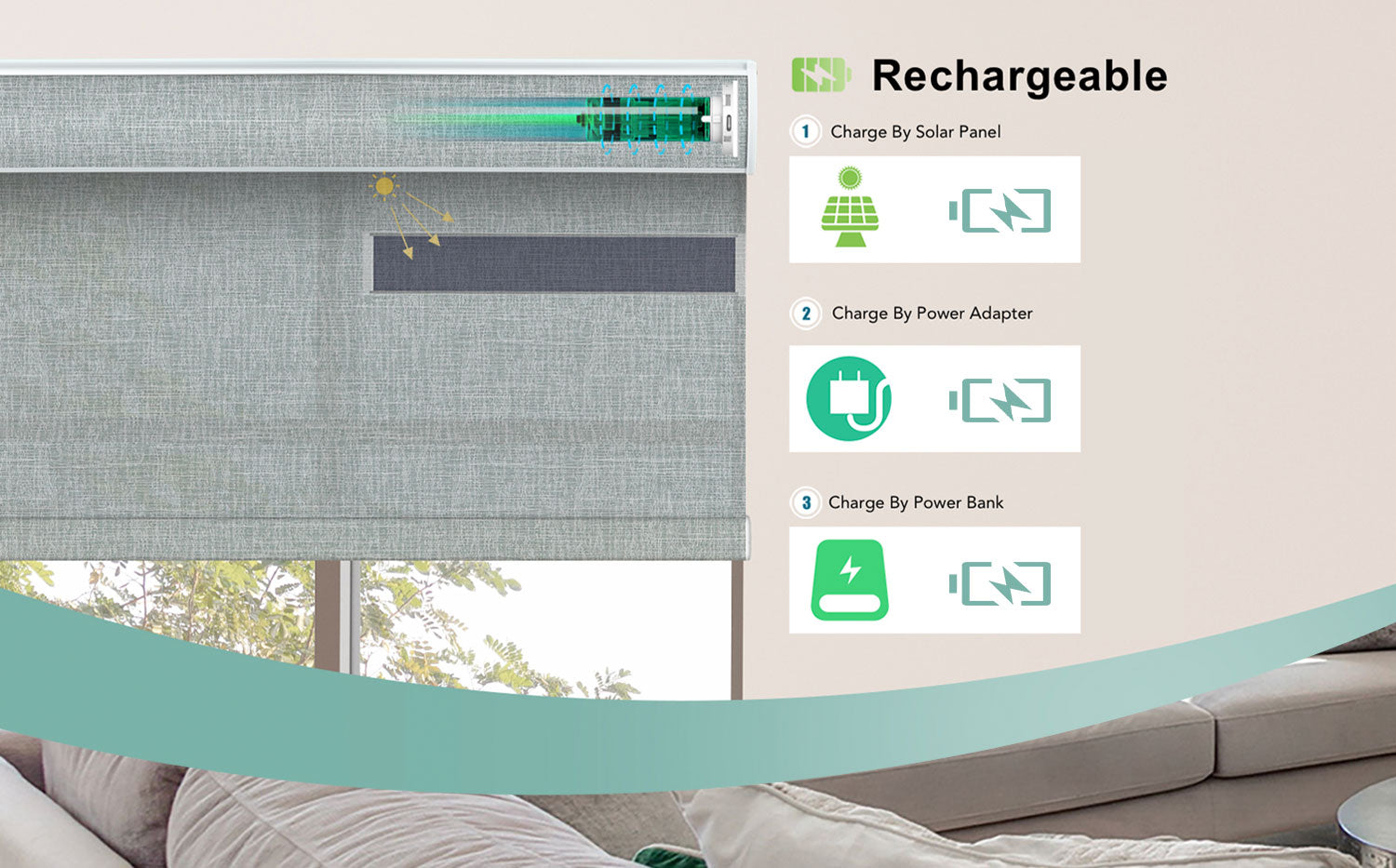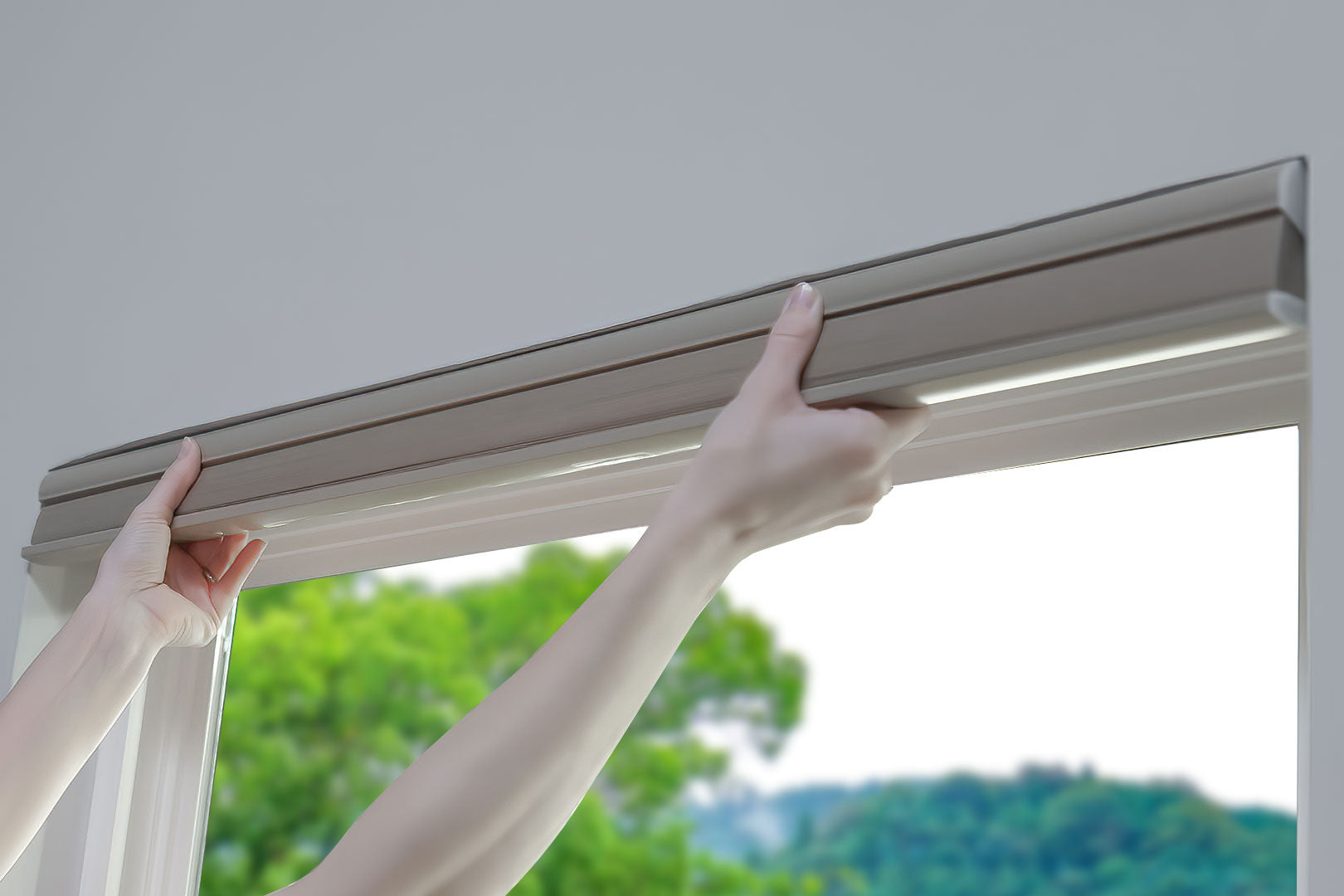
Are your window blinds looking a bit… off? Uneven slats or a stubborn refusal to stay put can disrupt your room's look and your control over light. Getting them perfectly adjusted shouldn't be a daily puzzle. This guide provides clear, straightforward steps to fix common issues for any blind type.
Here’s what you'll learn:
● Leveling uneven blinds for a clean look
● Adjusting cord or mechanism tension
● Operating different controls (corded, cordless, wand)
● Troubleshooting blinds that won't stay up or down
Dealing with fussy blinds highlights the appeal of modern solutions. At Blinds Magic, our smart blinds offer seamless operation. Imagine adjusting all your blinds perfectly with just your voice or a tap on your phone.
Leveling Uneven Blinds for a Clean Look
Nothing throws off a room's neat appearance quite like crooked window blinds. That uneven bottom rail or slanted set of slats just catches the eye – and not in a good way. It often happens when lift cords stretch differently over time, or the internal locking mechanism doesn't engage evenly across the blind.
Getting them back to perfect horizontal alignment is usually straightforward. For many common blinds (like venetian, cellular, or faux wood), the fix involves resetting the cord mechanism.
Here’s how you can typically do it:
1. Lower Fully: Bring the blinds all the way down until they cannot go any further. This often helps the internal cords reset.
2. Release Lock: Gently tug the lift cords downward to make sure the locking mechanism is fully disengaged.
3. Raise Slowly & Guide: Pull the lift cords to raise the blinds slowly. Use your other hand to gently guide the bottom rail, keeping it horizontal as it moves up.
4. Lock Firmly: Once at the desired height, give the lift cords a firm tug toward the outer side (usually) to lock them securely. Check the level. You might need to repeat this once or twice.
Pro Tip: Use a small spirit level on the bottom rail when raising the blind to ensure perfect horizontal alignment before you lock it.
This method works well for many standard blinds. Keep in mind, roller shades or vertical blinds have different leveling processes, usually involving adjustments at the brackets or track.
Manually getting blinds perfectly level can sometimes feel like a bit of a balancing act. If you find yourself constantly fiddling, or if perfect alignment every single time sounds appealing, upgrading could be the answer. Options like Blinds Magic smart blinds use precise motorized lifts, removing the possibility of unevenness from manual cord pulling altogether.
Adjusting Cord or Mechanism Tension
Do your blinds put up a fight when you try to raise them? Or maybe they have a mind of their own, slowly sliding down when you want them locked in place? These are common frustrations, often pointing toward tension issues within the cord mechanism or the spring system in cordless models.
If Blinds Are Too Tight or Hard to Move:
This usually stems from excess friction, tangled cords inside the headrail, or a stiff locking mechanism. First, check visually for any obvious cord tangles near the top.
A simple fix to try is lubrication. Get a can of silicone spray (avoid oil-based ones like WD-40, which attract dust). Protect your walls and floors, then spray sparingly into the channel at the top where the cords run. Work the blinds up and down a few times to spread the lubricant.
For cordless blinds, excessive stiffness might mean the internal spring tension is too high. Adjusting this often requires following the specific instructions for your blind model, as methods vary greatly. Some might have an accessible adjustment wheel, but many require careful handling.
If Blinds Are Too Loose or Won't Stay Up
This is typically caused by a worn-out cord lock or, in cordless blinds, insufficient spring tension. The cord lock has small parts that grip the cord; these can wear down or get stuck open.
Try the 'lower fully, raise slowly, lock firmly' technique mentioned earlier for leveling – sometimes, this reseats the lock properly. If that fails, the lock mechanism itself might need replacing.
For cordless blinds that drift down, the spring needs more tension. Again, consult your product manual. Some designs allow you to increase tension with specific actions (like repeatedly 'pumping' the bottom rail), while others need internal adjustment.
Pro Tip: Before diving into tension adjustments, double-check that the blind is mounted perfectly level and the installation brackets aren't pinching the headrail. Poor installation can sometimes mimic tension problems.
Constantly wrestling with blind tension gets old fast. It's another area where automated solutions make life easier. Blinds Magic smart blinds rely on precisely controlled motors, delivering smooth, reliable movement every time without the tension headaches of manual cords or springs.
Operating Different Controls (Corded, Cordless, Wand)

Window blinds offer various ways to control light and privacy. Knowing the nuances of each control style helps keep your blinds functioning smoothly and prevents unnecessary strain or damage. Let's break down the main types.
Corded Blinds
These classic controls typically use cords for both lifting and tilting.
● Lift Cords: Usually a pair (or more for wider blinds). Pull down evenly on these cords to raise the blind stack. To lock the blind at a specific height, angle the cords towards the outer edge of the window frame while holding tension, then release. To lower, pull the cords slightly inward (away from the locking side) to release the lock, then let the cords glide gently through your hand.
● Tilt Cords/Wand: For horizontal blinds (venetian, faux wood), you'll have either thinner cords or a wand. With tilt cords, pulling one cord tilts slats one way, the other cord tilts them back. With a wand, simply twist it clockwise or counter-clockwise to adjust the slat angle.
Pro Tip: Avoid yanking lift cords suddenly. Smooth, steady movements protect the internal mechanisms and promote even lifting.
Cordless Blinds
Valued for their clean look and safety, cordless blinds operate differently.
● Operation: Find the handle or grip point, usually centered on the bottom rail. Gently push up on this point to raise the blind, or pull down to lower it. The internal spring mechanism is designed to hold the blind in place wherever you stop it.
Pro Tip: Always lift or lower cordless blinds from the center of the bottom rail. Operating from one side can cause the blind to tilt or put uneven stress on the spring system over time.
Wand Controls (Variations)
While wands often control tilt, some systems use them for more.
● Vertical Blind Wands: On many vertical blinds, a single wand does double duty. Twisting the wand rotates the vertical vanes open or closed. Pushing or pulling the entire wand along its track traverses the blinds (moves them from side to side).
Juggling various cords and wands across different windows can become a bit much. This is where unified control systems show their strength. Blinds Magic smart blinds and curtains allow you to operate everything – rollers, venetians, cellulars, curtains – through one simple interface like a smartphone app or via voice commands. It truly streamlines how you manage light and privacy throughout your home.
Troubleshooting Blinds That Won't Stay Up or Down

It’s maddening when blinds defy your commands. Whether they crash down unexpectedly or refuse to lower, the cause usually lies within the lock mechanism, cord system, or spring motor. Let's diagnose these common headaches step-by-step.
Problem: Blinds Won't Stay Up (Keep Falling Down)
This is a frequent issue, especially with older blinds.
For Corded Blinds: Usually a faulty cord lock.
1. Test the Lock: Raise the blind completely. Give the lift cords a sharp tug sideways (typically outwards) to engage the lock. Does it hold even briefly, or does it slip immediately? This tells you if the lock is trying to work.
2. Inspect & Clean: Lower the blind. Peer into the headrail slot where the cords feed in. Look for the locking mechanism (often small rollers or serrated teeth). Check for dust, debris, or broken parts jamming it open. A puff of compressed air or gentle work with a small brush might clear it.
3. Attempt Reset: Fully lower the blind. Now, raise it again very slowly, keeping slight outward tension on the cords as it ascends. Lock it firmly at the top. Sometimes this helps reseat a sticky mechanism.
4. Identify Wear: If it still slips after cleaning and resetting, the internal parts of the lock are likely worn out. Replacing the cord lock mechanism is the next step, which is often a manageable DIY task with the right part.
For Cordless Blinds: Usually means the spring tension is too low.
1. Rule Out Obstructions: Make sure nothing is physically blocking the blind from staying up or catching on the sides of the window frame.
2. Try Increasing Tension: Always check your manufacturer's guide first, as methods differ!
○ Common Method: Lower the blind completely. Lift the bottom rail about 6 inches, then pull it down 3 inches. Repeat this up-and-down 'pumping' motion 5-10 times. This can sometimes retighten the spring on certain designs.
○ Check for Adjusters: Look closely at the end caps or underside of the headrail for any small screws or dials labeled for tension adjustment (less common).
3. Assume Internal Issue: If tension methods fail, the internal spring motor is likely weakened or needs professional service.
Problem: Blinds Won't Come Down (Stuck Up)
Equally frustrating, this points to jams or engagement failures.
For Corded Blinds: Could be the lock, tangled cords, or an obstruction.
1. Confirm Lock Release: Gently pull the lift cords slightly inward (away from the locking side) or straight down – whichever normally releases the lock. Listen for a click. Wiggle the cords gently; don't just yank harder.
2. Check for Internal Tangles: Use a flashlight to look up into the headrail. Are the lift cords tangled around mechanisms or caught on end caps? Gently shaking or tapping the headrail might dislodge a minor snag.
3. Reduce Lock Pressure: Carefully try lifting the bottom rail slightly with one hand to take weight off the cords, while simultaneously trying to release the lock with the other hand via the cords. This can free a jammed lock. Be gentle.
4. Lubricate Sparingly: A tiny shot of silicone spray near the cord lock might ease friction if it's just sticky.
For Cordless Blinds: Likely a jammed spring motor, internal cord snag, or obstruction.
1. Inspect Tracks/Sides: Ensure the edges of the blind fabric or slats aren't physically caught in the window channel or on the mounting brackets.
2. Apply Gentle Pressure: Place your hands in the center of the bottom rail and apply steady, gentle downward pressure. Do not force it. A slight side-to-side wiggle while pulling down might help dislodge it.
3. Look for Reset: Consult your manual. Some cordless types have a specific reset procedure (like pushing fully to the top, holding briefly, then pulling down) if the motor disengages.
4. Accept Internal Fault: If it absolutely refuses to budge despite gentle attempts, forcing it will likely cause damage. The internal mechanism probably requires professional repair.
Pro Tip: Aggressively forcing any stuck blind is the fastest way to break something permanently. Patience and methodical steps are your best tools.
Spending your weekend troubleshooting fussy blinds takes away from actually enjoying your space. Blinds Magic smart blinds sidestep these common manual failures entirely. Engineered with reliable motors, they provide consistent, smooth operation day in and day out, responding predictably to your app or voice commands without the worry of slipping locks or jammed springs.
Get Flawless Blind Control with Blinds Magic
Keeping your window blinds looking sharp and working right doesn't require secret knowledge. With a few straightforward techniques, you can tackle common issues like unevenness or stubborn mechanisms yourself.
Remember these key points for smooth operation and easy fixes:
● Leveling: Fully lower blinds, then raise slowly while guiding, lock firmly.
● Tension: Use silicone spray for tightness; check locks/springs for looseness.
● Operation: Use angled pulls for cord locks; lift/lower cordless from the center.
● Troubleshooting: Check locks, cords, springs methodically – avoid forcing stuck blinds.
While these tips help maintain manual blinds, ongoing adjustments can still steal your time. Blinds Magic offers a smarter approach with automated blinds and curtains. Enjoy perfect positioning and reliable performance every day, controlled effortlessly via app or voice – no more fiddling required.



















